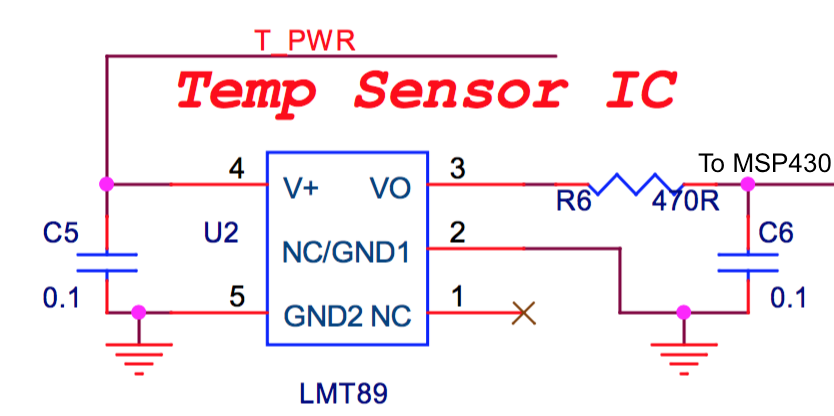In a more recent pilot manufacturing run, we updated that chip with the LMT89, which according to its datasheet has superior performance (in terms of accuracy of the temperature measurements) when compared to the LMT88. It was simple for us to do since the LMT89 and LMT88 have the same pin-out and usage, just that the LMT89 is supposed to be more accurate.
However, when we ran through a verification exercise after getting the first few assembled devices, we saw that the LMT89 performance is not as stated in its datasheet and not much better at all compared to the LMT88. The LMT89 datasheet states that all measurements should be within ± 1.5C.
| LMT88 | |||||
| Room temperature (C) | Minimum (C) | Maximum (C) | Average (C) | Variance | SD |
| 23 | 25.85 | 28.35 | 27.184 | 0.99293 | 0.9964587297 |
| 21 | 24.18 | 27.1 | 25.766 | 1.16723 | 1.080384191 |
| LMT89 | |||||
| Room temperature (C) | Minimum (C) | Maximum (C) | Average (C) | Variance | SD |
| 23 | 22.92 | 27.1 | 25.346 | 2.66033 | 1.631051808 |
| 21 | 22.08 | 25.01 | 23.674 | 1.35158 | 1.162574729 |
We are trying to better understand why there is both this variability across individual chips, and also why the measurements are off like this, more than what the LMT89 datasheet describes. Would someone from TI be able to comment on this?


